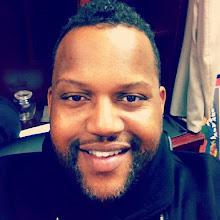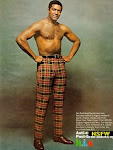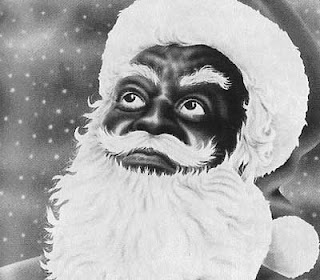
www.blackvisualartist.blogspot.com
A meeting place for Black artists and those interested in the arts.

If Fisk's current financial condition doesn't improve, there is a high likelihood that it may lose its accreditation. Fisk is accredited by the Southern Association of Colleges and Schools (SACS), which will review the University's accreditation status in 2009. In its current condition, Fisk will fail to satisfy the criteria established by SACS to establish financial viability.The petition goes on to enumerate all the dire misfortunes that would hobble or destroy Fisk if accreditation were lost, including the likelihood of being "forced to declare bankruptcy, and/or dramatically scale back or cease operations." The university asserted that it needed to accept Walton's $30-million offer to convince SACS of its financial viability.

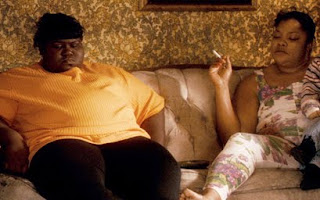

Four years ago when photography curator Julian Cox moved from L.A.'s J. Paul Getty Museum to Atlanta's High Museum of Art, he looked for a project that would connect him to his new community. The answer came quickly: a commemoration of the 40th anniversary of the death of the Rev. Martin Luther King Jr."King was a national figure, but he was also a man of Atlanta," says Cox, who set out to organize a landmark exhibition and build the preeminent collection of its kind at an American art museum. The High's tiny trove of 15 prints grew to 325 by 2008, when “Road to Freedom: Photographs of the Civil Rights Movement, 1956-1968” opened in Atlanta.The show subsequently acquired larger significance -- at the Smithsonian Institution's S. Dillon Ripley Center in Washington, D.C., where it became a major attraction for throngs that turned out for President Obama's inauguration.And now "Road to Freedom" has come to Los Angeles, where it is on view at the Skirball Cultural Center. The latest, expanded edition has a section on L.A.'s civil rights history and a companion show comparing Eric Etheridge's recent portraits of the 1961 Mississippi Freedom Riders with vintage mug shots. There are also documentary films and a lineup of public events. Concurrently, the California African American Museum will present a High Museum-organized exhibition on progressive social change.

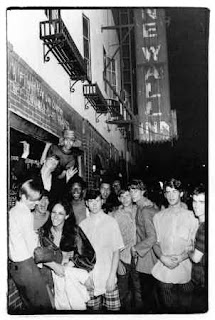
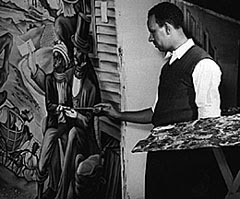






Being invisible may be every child’s fantasy, but for many men and women of color in America, it has been a grim reality.
For more than 30 years, contemporary Boston painter Robert Freeman has wrestled with this issue, the same one that fueled Ralph Ellison’s landmark novel about race relations in America, “The Invisible Man.” Freeman approaches his subjects from the perspective of the educated and affluent black middle class, a group often ignored by the media. But with the election of the nation’s first black president, Freeman’s work seems more relevant than ever.
“The Obamas are the face of a black middle class that has been around and flourished for a long, long time,” Freeman said from his studio on Moody Street in Waltham, “even if it has really been invisible. With the first family front and center, attention is focused on the universal values they reflect, that define what it is to be a man, what it is to be a family. For a young black child, a black president is an enormous thing. I don’t think we have felt the full effect of his election yet.
“I think there are far more ripples going out right now that are going to turn into big waves,” he continued. “A new face of America is being presented to Americans and to the rest of the world, and it has made everyone think quite differently about what we look like and who we are.”
Freeman, 64, hopes that his two young daughters will benefit not only from the political change that Obama promises, but from a change in the white world’s perception of African-Americans.
“We should always have been seen as a beautiful, cultured, elegant people,” said Freeman, who grew up in Washington, D.C., and moved to Boston in 1967 to attend the School of Fine Arts at Boston University. “But it seems that we are just being discovered.”
Freeman, who lives in Jamaica Plain, has noticed an uptick in interest surrounding his work. According to the artist, gallery sales of his work are up 33 percent over last year. 
He hopes that other black artists will benefit, too. The Clark Gallery in Lincoln has represented Freeman for years, but the work of few contemporary black artists are exhibited in the Boston area on a regular basis.
Freeman began painting the black middle class in the early 1970s. He drew on childhood memories of his parents: college-educated professionals who stepped out in black tie and chic cocktail dresses - images that would inspire his “Black Tie” series. But, Freeman says, at first they were painted with “scorn, scorn, scorn.” He, like many children of the ’60s, rejected the values of his parents.
The paintings feature black socialites in striking graphic compositions. They are aloof, self-absorbed and seem to resent the viewer’s intrusion. Their pretense, arrogance and materialism testify to an absence of substance and soul.
Over the years, Freeman returned to the “Black Tie” series. Today, 25 years after that first painting, it includes roughly 100 pieces. His work still focuses on the same subject matter: African-Americans in formal attire at social events. Freeman came to realize that painting the black, middle-class world of his parents was a means of understanding them and their values, as well as his own role as a parent and his place in the world.
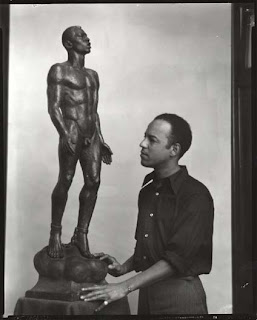



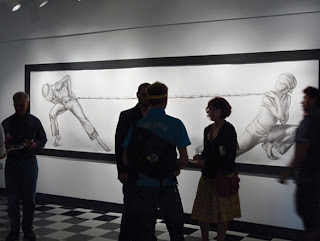

I am always interested in how people actually live with thier art collections. This is a recent article from www.nytimes.com about collectors and their small space (500 SF, which makes even my house seem large).
GREENWICH, Conn. — Apartment dwellers who worry that they don’t have enough room to display art should take a trip to “The Mouse House: Art From the Collection of Olga Hirshhorn,” at the Bruce Museum here. Ms. Hirshhorn managed to pack some 200 works of art into a tiny one-bedroom apartment in Washington.
Of course, it isn’t her primary residence. Ms. Hirshhorn and her husband, Joseph, whose collection is now housed on the National Mall as the Hirshhorn Museum and Sculpture Garden, had art-filled homes in other cities. But after Mr. Hirshhorn died in 1981, she wanted a cozy pied-à-terre as a base for frequent visits to friends in the capital.
The Mouse House began life as a garage built for one of the earliest electric cars. It was part of Argyle House, a Beaux-Arts mansion on Embassy Row. (A stone sculpture of a cat on the mansion’s roof was the inspiration for the smaller house’s nickname.)
Converted by the architect Richard Ridley into a 500-square-foot triplex full of nooks and crannies, the Mouse House, as Ms. Hirshhorn calls it, proved to be an ideal backdrop for the small sculptures, drawings and decorative objects acquired by the Hirshhorns over the years.
Many hold personal as well as aesthetic value. Among the contents are drawings inscribed to Ms. Hirshhorn by de Kooning and Picasso, and minuscule Calders and Giacomettis obtained while socializing with the artists in Paris and on the Riviera.

 From phillynews.com
From phillynews.com From the Chicago Tribune
From the Chicago Tribune

 Museum of the African Diaspora: The Art of Richard Mayhew, Oct. 9-Jan. 10, 2010. Deep, lush, brilliant color that will knock your socks off is just one of the many pleasures offered by Mayhew's paintings in a retrospective that includes landscapes and figurative works from the late 1950s through the 1970s. Mayhew, an activist and artist of African and Native American descent swept up in the fervor of the 1960s, was, along with Romare Bearden and Norman Lewis, a founding member of Spiral, a legendary coterie of black artists who addressed issues of racial equality through their art. http://www.moadsf.org/
Museum of the African Diaspora: The Art of Richard Mayhew, Oct. 9-Jan. 10, 2010. Deep, lush, brilliant color that will knock your socks off is just one of the many pleasures offered by Mayhew's paintings in a retrospective that includes landscapes and figurative works from the late 1950s through the 1970s. Mayhew, an activist and artist of African and Native American descent swept up in the fervor of the 1960s, was, along with Romare Bearden and Norman Lewis, a founding member of Spiral, a legendary coterie of black artists who addressed issues of racial equality through their art. http://www.moadsf.org/
 Sister Gertrude Morgan (1900-1980) was a preacher, missionary, artist, musician, and poet who worked in New Orleans in the 1960s and '70s, notable primarily for her folk art.
Sister Gertrude Morgan (1900-1980) was a preacher, missionary, artist, musician, and poet who worked in New Orleans in the 1960s and '70s, notable primarily for her folk art.Music was one of the tools of her ministry, and in the early 1970s, Let's Make A Record was recorded in order to capture Morgan singing and playing her tambourine. She painted in order to create visual aids for her preaching, and her paintings use a colorful religious iconography. Some of her favorite subjects are the Book of Revelation and her and Jesus flying in an airplane, this last accompanied by the poem "Jesus is my air Plane." She painted on whatever was at hand, including styrofoam trays, window shades and even toilet paper rolls.
She painted in order to create visual aids for her preaching, and her paintings use a colorful religious iconography. Some of her favorite subjects are the Book of Revelation and her and Jesus flying in an airplane, this last accompanied by the poem "Jesus is my air Plane." She painted on whatever was at hand, including styrofoam trays, window shades and even toilet paper rolls.
Her art brought her fame and notoriety, and in 1974 she announced that the Lord had ordered her to cease painting in order to concentrate on her preaching and poetry. She died in 1980.
In 2005, the New Orleans Museum of Art presented the first comprehensive collection of her art. Also in 2005, the Ropeadope label released King Britt presents Sister Gertrude Morgan, which took the a cappella/tambourine recordings of Let's Make A Record and added contemporary beat programming and instrumentation. The album received rave reviews and created a new, young audience for Sister Gertrude Morgan. The album artwork featured her paintings.
 In the 1940s, a photographer named Gordon Parks broke into a scene that had previously been dominated by white men. He was the first black photographer to work for magazines like Life and Vogue, and the first to work for the Farm Security Administration and the Office of War Information. Born into poverty and the youngest of 15, he had a sensibility about poor living conditions. But as a renowned photographer, he also had access to some of the most famed athletes and celebrities, like Muhammad Ali and Ingrid Bergman.
In the 1940s, a photographer named Gordon Parks broke into a scene that had previously been dominated by white men. He was the first black photographer to work for magazines like Life and Vogue, and the first to work for the Farm Security Administration and the Office of War Information. Born into poverty and the youngest of 15, he had a sensibility about poor living conditions. But as a renowned photographer, he also had access to some of the most famed athletes and celebrities, like Muhammad Ali and Ingrid Bergman. 



 Last Offence
Last Offence
